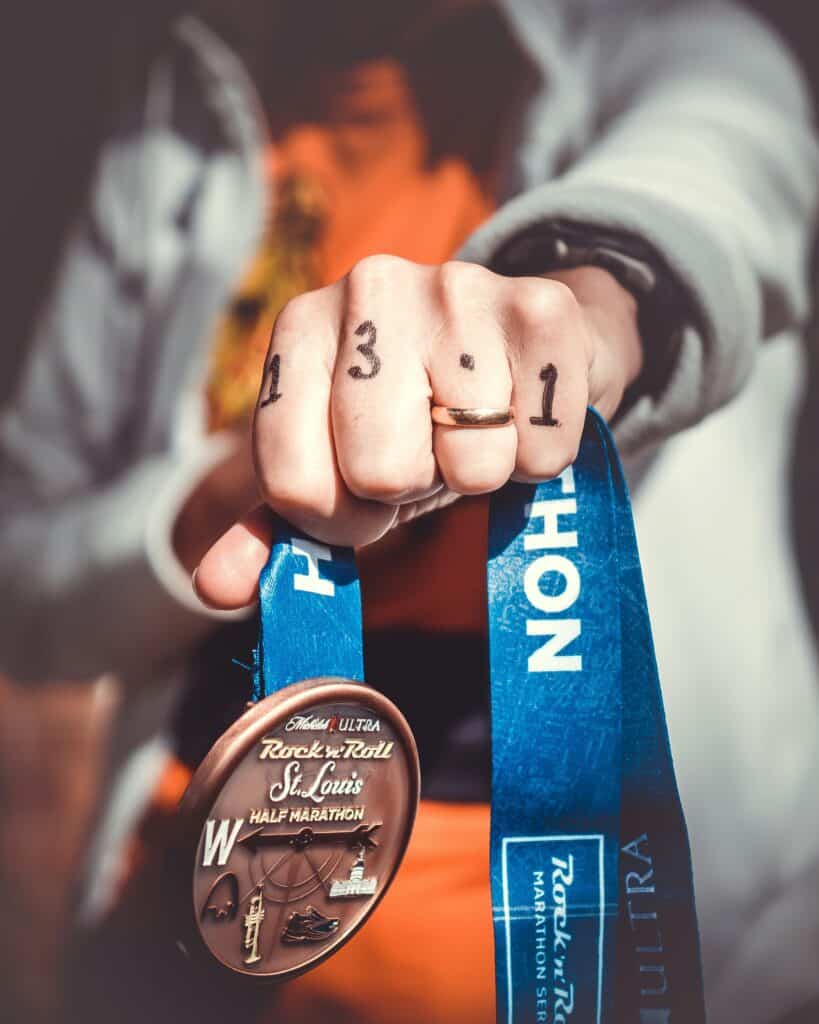
Runners put a lot of stress and strain on their feet and legs so it’s no surprise that many find themselves injured. Depending on the severity of the injury, they may be forced to take some time off of running for a few days, a few weeks, or a few months.
However, many runners are frustrated without the outlet of aerobic exercise in their lives and may be forced to turn to alternative means to sweat.
Recently, I was injured with a stress fracture in my foot and slowly moved from 100%-no-weight-bearing-exercise to no/low-impact exercise and eventually, I was cleared to begin running again.
I mixed up my cardio routine weekly to try new things as well as to workout as much of my body as possible. If you already enjoy a few of these things, you might be one step closer to going less insane if you are an injured runner!
100% no weight
These were all things that were cleared by my doctor when I was first relegated to the boot. Of course, all but the chair cardio required me to have access to a gym with a pool or equipment.
If you don’t belong to a gym with a pool, seek out places that do day passes or allow you to pay for a certain number of visits.
1) Swimming
If you can manage a freestyle stroke, swimming is certainly one of the best non-weight-bearing exercises you can do as an injured running. There is zero impact and it works all of your body, including your legs and lungs.
Though your legs won’t be absorbing the impact of your weight in the same way running does, it will help in your return to keep your muscles moving. I mixed up my swimming routine just like running – doing shorter sets on “speed days” and longer sets on “endurance days”.
2) Aqua jogging
Grab a floatation belt and prepare to feel exhausted. There are plenty of aqua jogging tutorials online, but this quick rundown from Speedo helps you understand the nuts and bolts.
Much like regular swimming, you can modify your aqua jogging workouts to be just like regular running workouts. Aim to start out with 10-20 minutes to get comfortable with the motion and work your way up.
3) Handcycle
I’ll admit, I started missing the sweat of an out-of-water workout and turned to the handcycle. As a runner, my arms certainly were not prepared to go for long periods of time with the handcycle at first.
However, I eventually was able to pop this into a circuit routine and feel a nice little sweat for a short time period. Just be prepared that this will likely feel incredibly boring without music or TV!
4) Chair cardio
Yes, it likely looks as ridiculous as it sounds, but chair cardio worked leg muscles and worked up a sweat. I found myself slowly working up to repeating shorter video tutorials in order to maximize my workout.
The best part of this is that you just need a chair and a big enough space to do a modified jumping jack in. My favorite one is part of the hurt foot series from Caroline Jordan.
Low Impact
Once I was cleared to put some weight on my foot, I was able to incorporate more styles of exercise into my routine. Thankfully, these normally boring exercises were a welcome change from what I was doing before so I embraced each of them on my return to running journey.
1) Cycling
Moving my legs fast and dripping sweat was exactly what the cardio doctor ordered. Plus, as long as I stayed in the saddle, the impact on my foot was negligible. I loved being able to finally see miles pass by and knew that I was giving most of my running muscles a good workout in the process.
2) Rowing
Much like the handcycle, the rowing machine is always a bit tough on runners. However, I was so gleeful to move away from the handcycle that I was up for the challenge. Much like cycling, this didn’t put my foot under much stress and therefore was a good stepping stone.
3) Elliptical
Okay, I will be the first to admit that it was a shock I was happy to be on the elliptical. However, as a runner, this is probably the closest thing to running you can get without actually running.
Once my foot could handle bearing weight for short periods of time, this was perfect for getting ready to run again. I could basically do any running workout on the elliptical and it was easily translated via miles or minutes.
4) Stair stepper/Stepmill
Whether using the easier stair stepper or the more difficult stepmill, these are both low impact machines that work the legs. I was cautious about using the stepmill in the first couple of weeks because of the pounding on my foot, but slowly started to work it into my routine.
If you are missing speedwork or hills and are cleared to use the stepmill, it is the perfect replacement!
Carissa Liebowitz has run the Boston Marathon as well as dozens of marathons and half marathons. You can follow her running adventures on Strava, Instagram and her blog.





